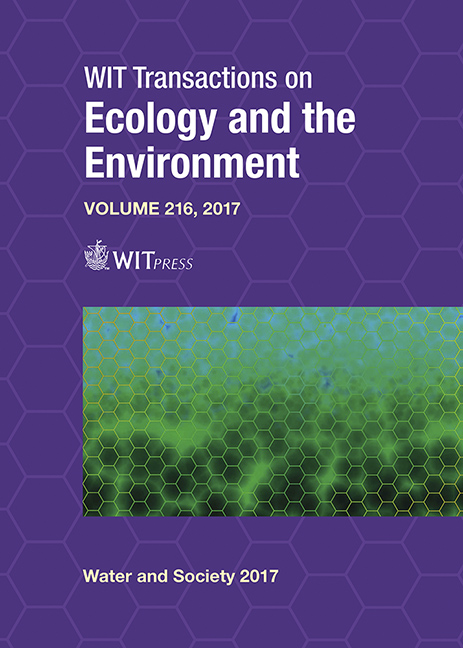RAINWATER FOR DRINKING WATER: A STUDY OF HOUSEHOLD ATTITUDES
Price
Free (open access)
Transaction
Volume
216
Pages
13
Page Range
299 - 311
Published
2017
Paper DOI
10.2495/WS170291
Copyright
WIT Press
Author(s)
CHIRHAKARHULA E. CHUBAKA, KIRSTIN E. ROSS, JOHN W. EDWARDS
Abstract
Many people in Australia choose to drink rainwater, even in areas where clean municipal water is available. Domestic rainwater is defined here as any water collected from building rooftops subsequent to rainfall events and stored by households for later use. Rainwater has been found in some cases to contain bacteria, or trace metals, or both. As a result, in Australia, the Department of Health and Ageing advises the public to limit rainwater use to outdoor purposes, and to laundry and toilet flushing. In this study, over 12 months, rainwater samples were collected around Adelaide and tested for E. coli and total coliforms. Of 400 samples tested, more than 50% contained E. coli. In Australia, the health guideline for E. coli is 0/100 mL for drinking water. A survey on household drinking water choice was undertaken across the metropolitan area of Adelaide. The aim was to determine drinking water choices and to understand the driving forces behind drinking potentially contaminated rainwater in a city where clean municipal water is supplied. The investigation concluded that a higher proportion of households use rainwater as their primary source of drinking water in the Adelaide Hills and foothills compared with other areas in metropolitan Adelaide (the Adelaide plains). It was found that a higher proportion of households are using domestic filtration systems to improve municipal water quality in the Adelaide plains. Opposition to municipal water chlorination and fluoridation was reported and this was central to peoples’ drinking water preferences. Notably, this opposition to municipal water chlorination and fluoridation is not supported by epidemiological evidence suggesting that these chemicals are harmful.
Keywords
public perception, drinking water, E. coli, household, fluoride, chlorination





